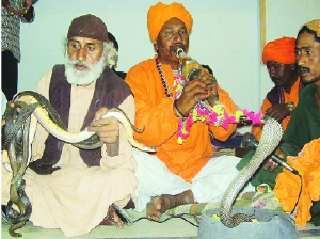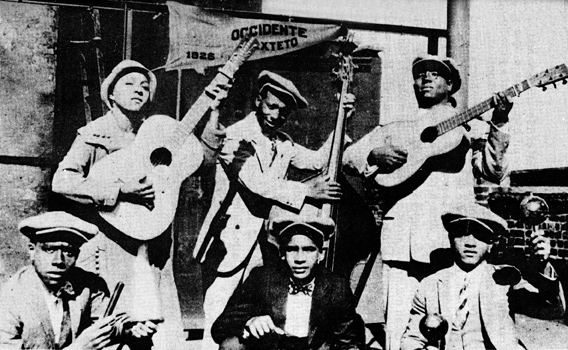Altamiro Carrilho & Carlos Poyares
Pixinguinha, de Novo
Pixinguinha, de Novo
1975
Lado A:
1 – Diplomata – com Altamiro Carrilho e Carlos Poyares
2 – Recordações - com Altamiro Carrilho
3 – Te encontrei - com Carlos Poyares
4 – A vida é um buraco - com Altamiro Carrilho
5 – Sonhos - com Altamiro Carrilho
6 – Desencanto - com Carlos Poyares
Lado B:
1 – Não me digas - com Carlos Poyares
2 – Sarravulho - com Altamiro Carrilho
3 – Um chorinho para Elizeth - com Altamiro Carrilho
4 – Inspiração - com Carlos Poyares e Altamiro Carrilho
5 – Caixa alta – com Altamiro Carrilho
6 – Salto do grilo – com Altamiro Carrilho
Lado A:
1 – Diplomata – com Altamiro Carrilho e Carlos Poyares
2 – Recordações - com Altamiro Carrilho
3 – Te encontrei - com Carlos Poyares
4 – A vida é um buraco - com Altamiro Carrilho
5 – Sonhos - com Altamiro Carrilho
6 – Desencanto - com Carlos Poyares
Lado B:
1 – Não me digas - com Carlos Poyares
2 – Sarravulho - com Altamiro Carrilho
3 – Um chorinho para Elizeth - com Altamiro Carrilho
4 – Inspiração - com Carlos Poyares e Altamiro Carrilho
5 – Caixa alta – com Altamiro Carrilho
6 – Salto do grilo – com Altamiro Carrilho
♫☆`*♥¸¸.•*¨*•♫☆`*♥¸¸.•*¨*•♫
♫☆`*♥¸¸.•*¨*•☆♫`*♥¸¸.•*¨*•♫
One of the most important choro flutists ever, Altamiro Carrilho put together a solid virtuosity and an ease for improvisation that in his 58 years as a professional artist (completed in 2001, having recorded over 110 albums) brought him the praise of both classical and popular renowned musicians, along with a consolidated popularity. His trademark was the insertion of excerpts of classical pieces into choro, and vice versa, as he did in the cadenza of the Concerto #2 in D Major KV 314 ahead of the Orquestra Sinfônica de Porto Alegre (1976). As an accompanist, he worked with Orlando Silva, Vicente Celestino, Elizeth Cardoso, Moreira da Silva, Francisco Alves, Sílvio Caldas, Caetano Veloso, and Chico Buarque, among many others. His maxixe "Rio Antigo" sold 960,000 copies in just six months back in 1956, bringing him national fame. Carrilho also presented the highly successful TV show Em Tempo de Música, and toured through many countries, having being praised as one of the world's best soloists by conductor Boris Trisno. As a classical music soloist, he played lead on several orchestra pieces like Mozart's Concert in G at the Teatro Municipal do Rio de Janeiro (1972). His album Clássicos em Choro was awarded with the Villa-Lobos trophy as Best Instrumental Album, and his Clássicos em Choro No. 2 won the gold record. In 1993, he was awarded with the Prêmio Sharp as the Best Arranger of Instrumental Music for his work on the album Altamiro Carrilho -- 50 Anos de Choro, and, in 1997, he won it again for the Best Instrumental Album, Flauta Maravilhosa.
Having four generations of musicians and conductors in his genealogical tree, becoming a flutist at age five was somewhat natural for Carrilho. Since he was nine, he had started working because of his father's illness, but he continued to study music at night. At 11, he joined the Banda Lira de Arion playing the snare drum. When he was 16, he moved to Niterói (Rio de Janeiro) and became a regular at the radio shows presented by Dante Santoro and Benedito Lacerda. During that period, he won first place in Ary Barroso's novice show. His improvisational skills soon brought him invitations to join the groups led by César Moreno, Canhoto, and Rogério Guimarães. He recorded for the first time in 1943, on a Moreira da Silva album. His first record as a solo artist was recorded six years later, with his choro "Flauteando na Chacrinha." His own regional (small group) was formed in 1950 to work at the Rádio Guanabara. In May 1951, he joined the Regional do Canhoto, replacing Benedito Lacerda. Working at the Rádio Mayrink Veiga, the group accompanied the biggest stars of that period, like Orlando Silva, Vicente Celestino, Moreira da Silva, Francisco Alves, and Sílvio Caldas. In 1955, he formed the Bandinha de Altamiro Carrilho, and, in the next year, he achieved national success with his maxixe "Rio Antigo." Through the TV Tupi show Em Tempo de Música, he and his Bandinha attracted large audience levels for two years. In 1957, he was replaced by Carlos Poyares at the Regional do Canhoto. From 1963 to 1969, he did several international tours through countries like Spain, Portugal, France, England (where he recorded programs for the BBC and NBC), Germany, Lebanon, Egypt, and the former U.S.S.R. (for a three-month season in which he was praised by the conductor Boris Trisno as one of the world's greatest soloists). Carrilho continues to perform and record, and was decorated in 1998 by the President Fernando Henrique Cardoso for his services to the country.
Having four generations of musicians and conductors in his genealogical tree, becoming a flutist at age five was somewhat natural for Carrilho. Since he was nine, he had started working because of his father's illness, but he continued to study music at night. At 11, he joined the Banda Lira de Arion playing the snare drum. When he was 16, he moved to Niterói (Rio de Janeiro) and became a regular at the radio shows presented by Dante Santoro and Benedito Lacerda. During that period, he won first place in Ary Barroso's novice show. His improvisational skills soon brought him invitations to join the groups led by César Moreno, Canhoto, and Rogério Guimarães. He recorded for the first time in 1943, on a Moreira da Silva album. His first record as a solo artist was recorded six years later, with his choro "Flauteando na Chacrinha." His own regional (small group) was formed in 1950 to work at the Rádio Guanabara. In May 1951, he joined the Regional do Canhoto, replacing Benedito Lacerda. Working at the Rádio Mayrink Veiga, the group accompanied the biggest stars of that period, like Orlando Silva, Vicente Celestino, Moreira da Silva, Francisco Alves, and Sílvio Caldas. In 1955, he formed the Bandinha de Altamiro Carrilho, and, in the next year, he achieved national success with his maxixe "Rio Antigo." Through the TV Tupi show Em Tempo de Música, he and his Bandinha attracted large audience levels for two years. In 1957, he was replaced by Carlos Poyares at the Regional do Canhoto. From 1963 to 1969, he did several international tours through countries like Spain, Portugal, France, England (where he recorded programs for the BBC and NBC), Germany, Lebanon, Egypt, and the former U.S.S.R. (for a three-month season in which he was praised by the conductor Boris Trisno as one of the world's greatest soloists). Carrilho continues to perform and record, and was decorated in 1998 by the President Fernando Henrique Cardoso for his services to the country.
One of the most important living artists in the choro genre, Carlos Poyares has recorded over nine solo albums and participated in countless others as a sideman. As an actor and flutist, Poyares worked in nine films.
As a member of the third generation of a family of musicians, Poyares learned the rudiments of flute with his mother, a concerto player. At five, he was given a tin flute. Three years later, he ran away from home to work in a circus, where he worked as a trapeze artist and several other jobs. Leaving the circus, Poyares worked as a flutist for the Rádio Espírito Santo (Vitória). In 1953, Poyares moved to Rio de Janeiro and worked for several radio stations. In 1957, he substituted Altamiro Carrilho in the Regional do Canhoto (at Rádio Mayrink Veiga). Poyares worked in several nightclubs of Rio and São Paulo while recording as a session musician at the same time and participating in the historic show O Samba Pede Passagem with the Opinião group. He recorded his first album in 1965, Som de Prata, Flauta de Lata, which was awarded for his ingenious use of his tin flute in complex arrangements and improvisations. In 1994, Poyares toured Europe as a soloist, performing in France, Spain, Holland, and Portugal.
As a member of the third generation of a family of musicians, Poyares learned the rudiments of flute with his mother, a concerto player. At five, he was given a tin flute. Three years later, he ran away from home to work in a circus, where he worked as a trapeze artist and several other jobs. Leaving the circus, Poyares worked as a flutist for the Rádio Espírito Santo (Vitória). In 1953, Poyares moved to Rio de Janeiro and worked for several radio stations. In 1957, he substituted Altamiro Carrilho in the Regional do Canhoto (at Rádio Mayrink Veiga). Poyares worked in several nightclubs of Rio and São Paulo while recording as a session musician at the same time and participating in the historic show O Samba Pede Passagem with the Opinião group. He recorded his first album in 1965, Som de Prata, Flauta de Lata, which was awarded for his ingenious use of his tin flute in complex arrangements and improvisations. In 1994, Poyares toured Europe as a soloist, performing in France, Spain, Holland, and Portugal.
♥♥























































































+Front.jpg)

















